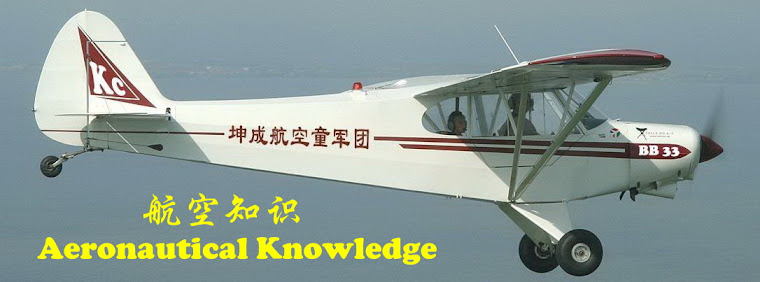
渦輪螺旋槳發動機(Turboprop Engines,或根據其發動機類型而稱為渦輪螺旋槳噴射發動機,並常簡稱為渦槳發動機,是一種通常用於飛機上的燃氣渦輪發動機(gas turbine engine)。
渦槳發動機的驅動原理大致上與使用活塞發動機作為動力來源的傳統螺旋槳飛機雷同,是以螺旋槳旋轉時所產生的力量來作為飛機前進的推進力。其與活塞式螺槳機主要的差異點除了驅動螺旋槳中心軸的動力來源不同外,還有就是渦槳發動機的螺旋槳通常是以恆定的速率運轉,而活塞動力的螺旋槳則會依照發動機的轉速不同而有轉速高低的變化。
雖然渦槳發動機的燃燒室與渦輪噴射發動機類似,但為了自排廢氣中回收較多的動力以驅動螺旋槳,渦槳引擎的渦輪(Turbine)端之扇葉級數比較高。相反的,由於渦輪噴射發動機主要的推進力都來自於熱氣直接排放至大氣中所產生的反作用力,因此其渦輪端的扇葉級距數越小越好,只需保持足夠的回收動力用來驅動壓縮端的扇葉即可。
事實上,渦槳發動機的效率亦高於渦輪風扇發動機,但是使用渦槳引擎的飛機速度通常較渦輪風扇發動機的飛機來的低。原因是渦槳引擎的旁通比通常比渦輪風扇引擎來的高,但是也造成其槳葉端部分速度很高,有產生震波的可能。另外,因渦輪轉動速度很快,使得渦輪與螺槳之間必須要有變速齒輪,來降低螺槳轉速使其葉端不要超過音速。所以使用螺槳發動機的飛機會多個變速齒輪的重量。
雖然渦輪螺旋槳發動機常用在較小型或較低速的次音速飛機上,但也有少數使用渦輪螺旋槳發動機的飛機,可以以非常接近音速的500節(約926公里/小時,或575英里/小時)的空速在空中巡航,例如蘇聯/俄羅斯空軍的Tu-95和海軍航空兵的Tu-142四發重型飛機。
A turboprop engine is a type of aircraft powerplant that uses a gas turbine to drive a propeller. The gas turbine is designed specifically for this application, with almost all of its output being used to drive the propeller. The engine's exhaust gases contain little energy compared to a jet engine and play a minor role in the propulsion of the aircraft.
The propeller is coupled to the turbine through a reduction gear that converts the high RPM, low torque output to low RPM, high torque. The propeller itself is normally a constant speed (variable pitch) type similar to that used with larger reciprocating aircraft engines.
Currently, turboprop engines are generally used on small subsonic aircraft, but some aircraft outfitted with turboprops have cruising speeds in excess of 500 kt (926 km/h, 575 mph). Large military and civil aircraft, such as the Lockheed L-188 Electra, have also used turboprop power.
In its simplest form, a turboprop consists of an intake, compressor, combustor, turbine and a propelling nozzle. Air is drawn into the intake and compressed by the compressor.
In its simplest form, a turboprop consists of an intake, compressor, combustor, turbine and a propelling nozzle. Air is drawn into the intake and compressed by the compressor.
Fuel is then added to the compressed air in the combustor, where the fuel-air mixture then combusts. The hot combustion gases expand through the turbine. Some of the power generated by the turbine is used to drive the compressor. The rest is transmitted through the reduction gearing to the propeller. Further expansion of the gases occurs in the propelling nozzle, where the gases exhaust to atmospheric pressure. The propelling nozzle provides a relatively small proportion of the thrust generated by a turboprop.
Turboprops are very efficient at modest flight speeds (below 450 mph) because the jet velocity of the propeller (and exhaust) is relatively low. Due to the high price of turboprop engines, they are mostly used where high-performance short-takeoff and landing (STOL) capability and efficiency at modest flight speeds are required. In a civilian aviation context, the most common application of turboprop engines is in small commuter aircraft, where their greater reliability as compared to reciprocating engines offsets their higher initial cost.
一般来说,现代不加力涡轮风扇发动机的涵道比是有着不断加大的趋势的。因为对于涡轮风扇发动机来说,若飞行速度一定,要提高飞机的推进效率,也就是要降低排气速度和飞行速度的差值,需要加大涵道比;而同时随着发动机材料和结构 工艺的提高,许用的涡轮前温度也不断提高,这也要求相应地增大涵道比。对于一架低速(500~600km/h)的飞机来说,在一定的涡轮前温度下,其适当的涵道比应为50以上,这显然是发动机的结构所无法承受的。
为了提高效率,人们索性便抛去了风扇的外涵壳体,用螺旋桨代替了风扇,便形成了涡轮螺旋桨发动机,简称涡桨发动机。涡轮螺旋桨发动机由螺旋桨和燃气发生器组成,螺旋桨由涡轮带动。由于螺旋桨的直径较大,转速要远比涡轮低,只有大约1000转/分,为使涡轮和螺旋桨都工作在正常的范围内,需要在它们之间安装一个减速器,将涡轮转速降至十分之一左右后,才可驱动螺旋桨。这种减速器的负荷重,结构复杂,制造成本高,它的重量一般相当于压气机和涡轮的总重,作为发动机整体的一个部件,减速器在设计、制造和试验中占有相当重要的地位。
涡轮螺旋桨发动机的螺旋桨后的空气流就相当于涡轮风扇发动机的外涵道,由于螺旋桨的直径比发动机大很多,气流量也远大于内涵道,因此这种发动机实际上相当于一台超大涵道比的涡轮风扇发动机。
尽管工作原理近似,但涡轮螺旋桨发动机和涡轮风扇发动机在产生动力方面却有着很大的不同,涡轮螺旋桨发动机的主要功率输出方式为螺旋桨的轴功率,而尾喷管喷出的燃气推力极小,只占总推力的5%左右,为了驱动大功率的螺旋桨,涡轮级数也比涡轮风扇发动机要多,一般为2~6级。
同活塞式发动机+螺旋桨相比,涡轮螺旋桨发动机有很多优点。首先,它的功率大,功重比(功率/重量)也大,最大功率可超过10000马力,功重比为4以上;而活塞式发动机最大不过三四千马力,功重比2左右。其次,由于减少了运动部件,尤其是没有做往复运动的活塞,涡轮螺旋桨发动机运转稳定性好,噪音小,工作寿命长,维修费用也较低。而且,由于核心部分采用燃气发生器,涡轮螺旋桨发动机的适用高度和速度范围都要比活塞式发动机高很多。在耗油率方面,二者相差不多,但涡轮螺旋桨发动机所使用的煤油要比活塞式发动机的汽油便宜。
由于涵道比大,涡轮螺旋桨发动机在低速下效率要高于涡轮风扇发动机,但受到螺旋桨效率的影响,它的适用速度不能太高,一般要小于900km/h。目前在中低速飞机或对低速性能有严格要求的巡逻、反潜或灭火等类型飞机中的到广泛应用。


